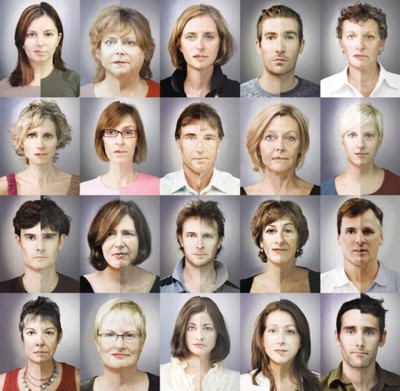Evolutionary rise
Ogilvy’s striking return – 15 years in the making
By Carey Toane

The unprecedented success of Dove’s “Evolution” spot and the
Self-Esteem Fund have landed Ogilvy’s 47-year-old Toronto shop back in our AOY top three for the first time since they took Silver back in 1992 – when another piece of Dove creative, “Litmus Test,” earned kudos all around.
Our judges loved “Evolution” more than any other individual piece of work submitted this year. AOY judge Craig Redmond, CD at Grey Vancouver, called it “probably the most significant event in Canadian advertising history” given its sweep of two Cannes Grand Prix – and its domination of most ad award shows and top honours out there.
Part of the agency’s success is thanks to its hands-on approach to getting into its clients’ business. In fact, CCO Nancy Vonk takes pride in knowing as much about a product or service as the client’s employees do, to understand what gives it an edge over the competition. “Janet [Kestin, her creative partner] and I were really tight with the chemists at Dove,” Vonk explains. “We’d be invited to their houses. Our partnership saw us learning as much technically as a lot of their employees did.”
That collaborative approach has filtered down through the whole agency. Under Vonk and Kestin, who have been at the helm for nearly two decades, there has been a move away from a formal structure of peer review to a process in which seniors and juniors collaborate on ideas and current work is tacked up in the halls to spark conversation. “There are a lot of really good minds floating around and people who are especially well-suited to be collaborative,” says Vonk. “It’s a very supportive group.”
It’s also, naturally, a very happy group of late. “Honestly, I just can’t believe the smiles as I walk down the hall,” says Vonk of the agency’s standout year. “People are really, really happy.”
THE WINNING INGREDIENT:
Consumer connectionWhether it’s making housecalls with consumers or using the agency staff as “one giant focus group,” Ogilvy takes a
hands-on, in-depth approach to consumer research at the outset of the process – after the brief but before the brainstorm. (Vonk believes agencies shouldn’t research creative ideas, a process that tends to reward the familiar and the average.)
“Broadly, where I appreciate the research is upfront,” she says. “This is where you tend to get the very best out of research – to help understand the product, the consumers and where everybody stands, and [to] take that into the idea-generation process, but then leave it behind after the ideas are born.”
The agency has adopted what Unilever terms “consumer connect,” an ethnographic approach that involves going into consumers’ homes and talking to them about how they use their clients’ brands, how they might use a competitor’s brand, and how each fits into their day-to-day lives. “It’s like those reality TV shows where people don’t seem to pay attention to the camera,” says Vonk. “People quickly lose their inhibitions and just start doing their own thing. If [they] feel comfortable with [you], people are pretty forthcoming, and I think they appreciate being asked about their lives.”
Back in the office, agency and client employees will be polled for feedback and ideas, often as part of the same test group. In some cases this research ends up becoming the creative idea itself, such as the fill-in-the-blanks questionnaires answered by Unilever and Ogilvy employees and their female family members that appeared, un-edited, as Dove advertising in Flare magazine’s 25th-anniversary issue.
™ strategy title, tagline and logo are trademarks of and published by Brunico Communications Ltd.
™ strategy Agency of the Year title, tagline and logo are trademarks of and the event is produced by Brunico Communications Ltd.

